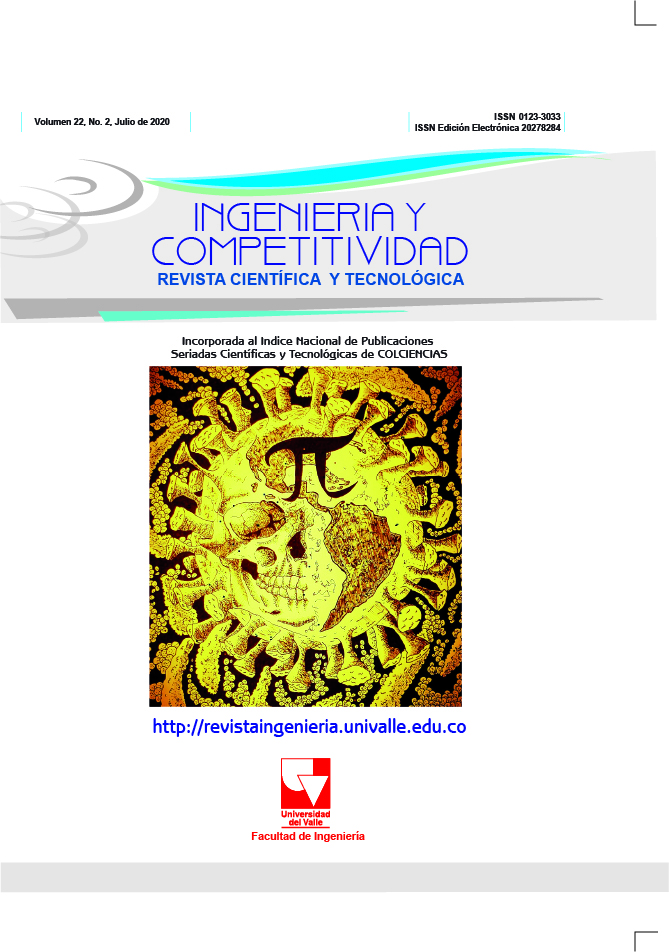Análisis de ataques informáticos mediante Honeypots en la Universidad Distrital Francisco José de Caldas
Contenido principal del artículo
El presente artículo es resultado del trabajo desarrollado para el diseño e implementación de Honeypots como una alternativa complementaria al esquema de seguridad informática existente en la Universidad Distrital Francisco José de Caldas, proyecto que a su vez contribuye en el análisis y detección de ataques a la seguridad de la red y demás elementos de tipo informático en la institución.
Para el desarrollo de este artículo, trabajamos utilizando el ciclo PDCA (Planificar - Hacer - Verificar - Actuar). Es un modelo basado en la gestión de procesos y su mejora continua, con una aplicación simple y utilizada adecuadamente, puede ayudar mucho en la realización de actividades, tanto productivas como administrativas, de una manera más organizada y efectiva. Por lo tanto, la adopción del ciclo PDCA proporciona una guía simple para la gestión de actividades y procesos, la estructura básica de un sistema y es aplicable a cualquier organización.
Después de la implementación de Cowrie y HoneyPy, fue posible identificar diferentes patrones y formas de ataque, guiando la configuración de un script en el servidor IDS (Intrusion Detection System), permitiendo con los registros almacenados crear reglas e implementarlo en Iptables. Este hecho permite que el servidor IDS se convierta en un nodo en una red de sensores que alimentan la base de datos globalmente para una investigación de los ataques en todas las computadoras conectadas y configuradas, obteniendo información para realizar un análisis complejo para el usuario final.
El diseño de infraestructura con honeypots, implementado en la Universidad del Distrito Francisco José de Caldas, permite encontrar fallas de seguridad pertenecientes a los servidores de la universidad debido a ataques informáticos. Se diseñó una nueva distribución de red para registrar información sobre los diferentes ataques y permitir establecer soluciones efectivas.
- Ataques Informáticos
- Honeypots
- Seguridad Informática
- Vulnerabilidades
(1) Mora PA. Seguridad informática – Honeypots [master’s thesis]. Pichincha: Universidad de las Fuerzas Armadas de Ecuador ESPE; 2008.
(2) La norma ISO 9001-2015 ¿En que se basa el ciclo PHVA? [Internet]. Bogotá: ISOTools Excellence Colombia; 2017 [Consulted 2018 Nov 14]. Available in: https://www.isotools.com.co/la-norma-iso-9001-2015-se-basa-ciclo-phva/.
(3) El ciclo PHVA Planear – Hacer – Verificar – Actuar [Internet]. Blog – Top Punto Com; 2007 [Consulted 2018 Nov 14]. Available in: http://www.blog-top.com/el-ciclo-phva-planear-hacer-verificar-actuar/.
(4) Sedes Universidad Distrital Francisco José de Caldas [Internet]. Bogotá: 2017. Universidad Distrital Francisco José de Caldas. [Consulted 2018 Nov 14]. Available in: http://www.udistrital.edu.co/sedes.
(5) Red de datos UDNET [Internet]. Bogotá: 2018. Universidad Distrital Francisco José de Caldas. [Consulted 2018 Nov 14]. Available in: http://udnet.udistrital.edu.co:8080/documents/11177/457497/topologia+red+2017.
(6) BBC Mundo. “12 ataques por segundo”: cuáles son los países de América Latina más amenazados por "malware" [Internet]. BBC. 6 Sept 2016. [Consulted 2018 Nov 20]. Available in: http://www.bbc.com/mundo/noticias-37286420.
(7) Gómez A. Seguridad en equipos informáticos. 1st Ed. Madrid: RA-MA, S.A; 2014.
(8) León H. Ingeniería Telemática, nueva carrera del ICESI. [Internet]. El Tiempo. 9 Mar 1998. [Consulted 2018 Nov 27]. Available from: http://www.eltiempo.com/archivo/documento/MAM-780886.
(9) Baumann R. Plattner C. White paper: Honeypot [Internet] 2002. [Consulted 2018 Nov 27]. Available in: https://pdfs.semanticscholar.org/ab89/78bb9b0fe61820d8b2f2a06bd4f3ac746128.pdf.
(10) Informe de Gestión por Resultados [Internet]. Bogotá: Oficina asesora de planeación y control - Universidad Distrital Francisco José de Caldas; 2012. [Consulted 2018 Nov 27]. Available in: http://comunidad.udistrital.edu.co/jruiz/files/2015/07/Informe-de-Gesti%C2%A2n-por-Resultados-2012.pdf.
(11) Castillo P. Despliegue de honeypots de forma ágil y económica con SmartHive [Internet blog]. SecurityInside. 2016 [Consulted 2018 Dec 03]. Available in: https://securityinside.info/despliegue-de-honeypots-con-smarthive/.
(12) Welcome to HoneyPy Docs! [Internet]. 2017. [Consulted 2018 Nov 27]. Available in: https://honeypy.readthedocs.io/en/latest/?badge=latest.
Descargas

Esta obra está bajo una licencia internacional Creative Commons Atribución-NoComercial-CompartirIgual 4.0.
Los autores que publican en esta revista están de acuerdo con los siguientes términos:
Los autores ceden los derechos patrimoniales a la revista y a la Universidad del Valle sobre los manuscritos aceptados, pero podrán hacer los reusos que consideren pertinentes por motivos profesionales, educativos, académicos o científicos, de acuerdo con los términos de la licencia que otorga la revista a todos sus artículos.
Los artículos serán publicados bajo la licencia Creative Commons 4.0 BY-NC-SA (de atribución, no comercial, sin obras derivadas).





